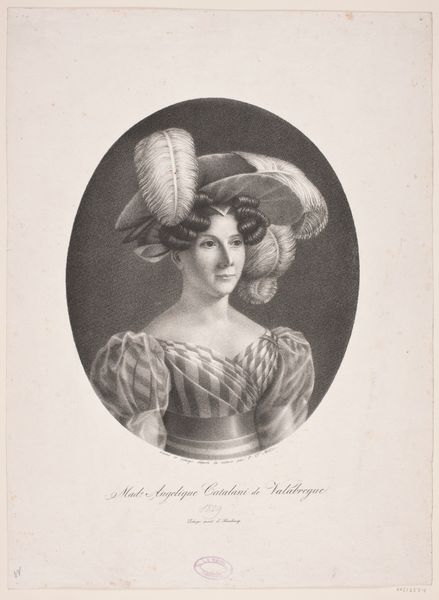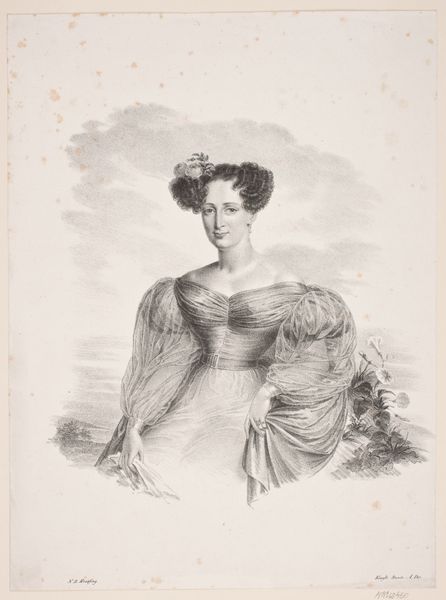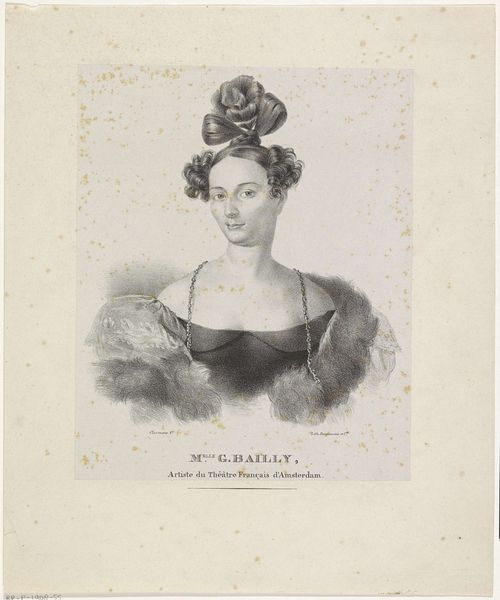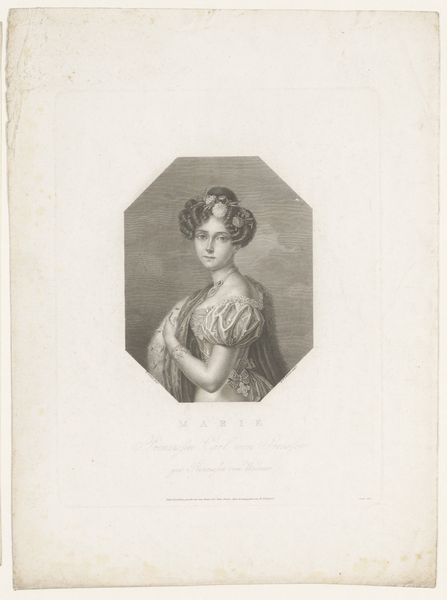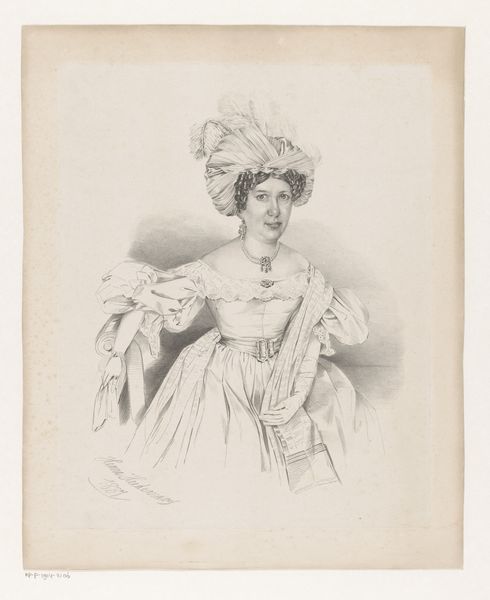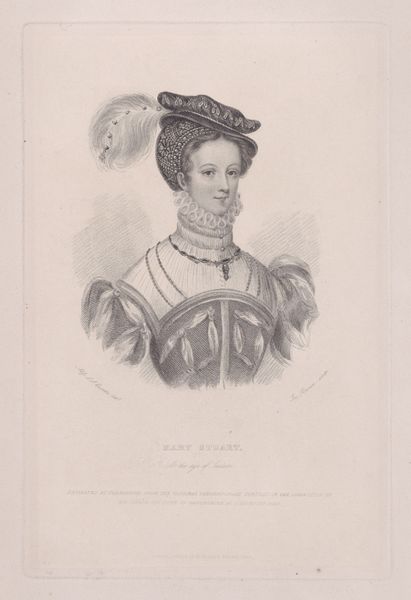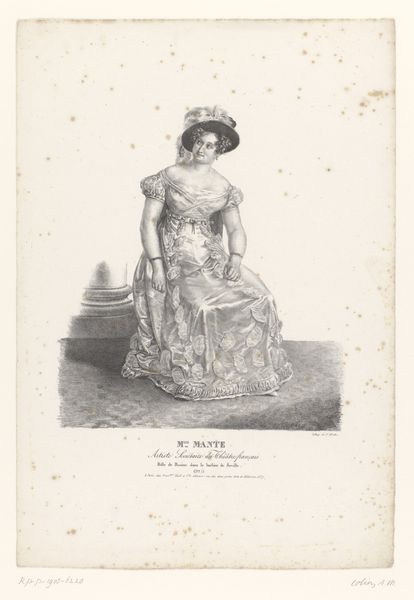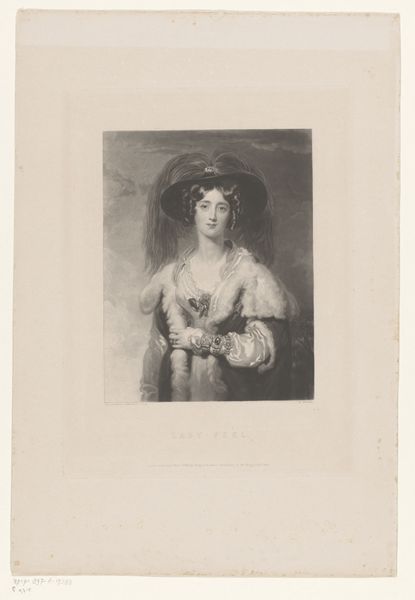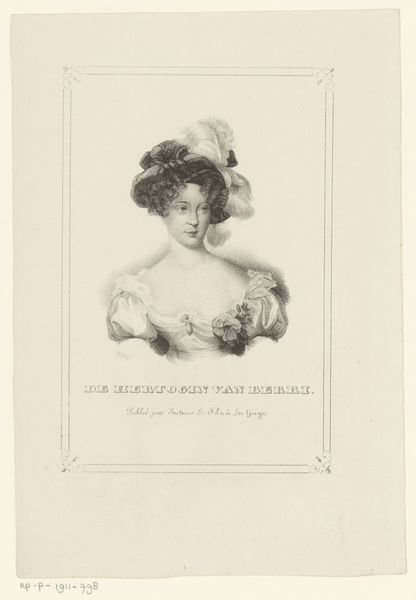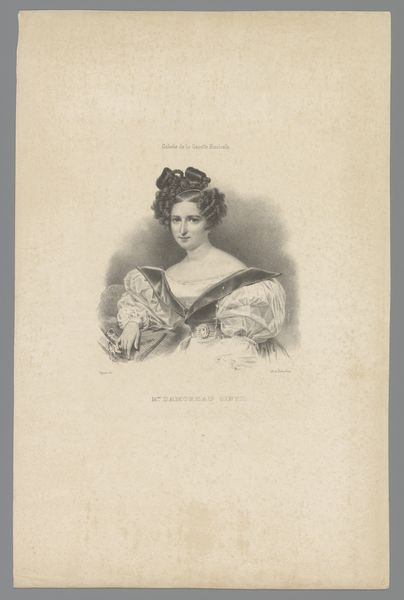
drawing, pencil
#
portrait
#
pencil drawn
#
drawing
#
neoclacissism
#
pencil sketch
#
pencil drawing
#
pencil
#
academic-art
Dimensions: height 524 mm, width 358 mm
Copyright: Rijks Museum: Open Domain
Curator: Oh, look at her. Doesn't she seem terribly…composed? Almost tragically so. Editor: Indeed. This is Auguste Toussaint Lecler's portrait of Marie Amélie of Bourbon-Sicily, rendered in pencil around 1830. I find the application of pencil and the implied gestures behind the technique deeply compelling. Curator: It’s that stiff formality, the feathers in her hat—a sort of doomed elegance clinging to her like cobwebs. I bet the artist, while executing all the details of ruffles and ribbons, saw a bit of that too, eh? Editor: Possibly. Pencil as a medium often democratizes portraiture. This wasn’t oil paint requiring extensive resources; this was a relatively accessible method. The paper itself would've been produced en masse for such works too. Curator: And yet, that precision! The way each line seems carefully considered, building to something so polished. Still, the delicacy of pencil gives her a fragile quality, a vulnerability all that pomp can't quite mask. Like seeing a ghost through a lace curtain. Editor: The "academic-art" approach ensured certain standards. Consider how materials affect availability and perception, and note pencil was far less financially demanding than pigment based processes, it offered access beyond traditional hierarchies. Curator: It feels haunted, but not by her spirit, maybe by all the expectations pressing down on her, all that silk and propriety a cage around a real person. It begs to think, you know? What's beneath the surface of these stoic figures from history. Editor: I would just emphasize the role and availability of resources: paper and pencil, allowing broader, emerging publics to be captured. With portraiture unbound from patronage it could extend to representing many in society. Curator: Perhaps in simplicity we find multitudes. An echo of something greater than herself. Editor: Absolutely. Thinking about the portrait in terms of process changes my reading of it entirely.
Comments
No comments
Be the first to comment and join the conversation on the ultimate creative platform.
